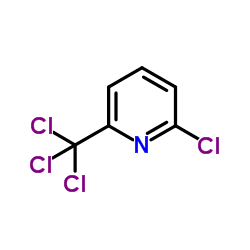Nitrapyrin: a scientific advisory group review of the mode of action and carcinogenicity in B6C3F1 mice.
B L Yano, J F Hardisty, J C Seely, B E Butterworth, E E McConnell, J A Swenberg, G M Williams, K E Stebbins, B B Golllapudi, D L Eisenbrandt
文献索引:Regul Toxicol Pharmacol 51(1) , 53-65, (2008)
全文:HTML全文
摘要
Nitrapyrin has been registered as a nitrogen stabilizer in the United States for many years based on a robust set of regulatory data. These data demonstrated that nitrapyrin was not genotoxic and that there were no tumors elicited in rats or mice that were relevant for human risk assessment. A repeat carcinogenicity study in B6C3F1 mice, conducted at two substantially higher-dose levels (0, 125 or 250 mg/kg/day) than the original study (0, 5, 25 or 75 mg/kg/day) identified liver, stomach, epididymal and Harderian gland tumors. In order to assess the relevance of these findings for human risk assessment, a Scientific Advisory Group (SAG) examined relevant microscopic changes in these tissues and also evaluated genotoxicity and mechanistic data. The SAG determined that the maximum tolerated dose had been exceeded in mice given 125 or 250 mg/kg/day, based on 26-33% decreased body weight gains (males-250 mg/kg/day), hepatocellular necrosis and compensatory hepatocellular proliferation (males and females-125 and 250 mg/kg/day). The SAG believed that the increased incidences of hepatocellular foci of alteration and hepatocellular neoplasms represented an epigenetic response to hepatocellular necrosis and increased mitogenesis. Increased incidences of proliferative lesions in the forestomach mucosa were likely secondary to the irritant effects of nitrapyrin. Neither the liver nor forestomach effects were interpreted to be a direct carcinogenic effect. Higher incidences of Harderian gland adenomas (females) and undifferentiated sarcomas in the epididymis represented normal biological variations in incidence and were unrelated to nitrapyrin. Therefore, it was the SAG's opinion that nitrapyrin exposure that does not produce target organ toxicity in exposed individuals would not be expected to increase the risk of cancer.
相关化合物
| 结构式 | 名称/CAS号 | 分子式 | 全部文献 |
|---|---|---|---|
 |
氯草定
CAS:1929-82-4 |
C6H3Cl4N |
|
Reductive dehalogenation of the trichloromethyl group of nit...
1993-11-01 [Appl. Environ. Microbiol. 59(11) , 3597-601, (1993)] |
|
Selective enhancement of the fluorescent pseudomonad populat...
2008-10-01 [Microb. Ecol. 56(3) , 538-54, (2008)] |
|
Teratologic evaluation of orally administered nitrapyrin in ...
1988-10-01 [Fundam. Appl. Toxicol. 11(3) , 464-71, (1988)] |
|
Distribution of nitrapyrin [12-chloro-6-(trichloromethyl)-py...
1982-05-01 [J. Sci. Food Agric. 33(5) , 451-5, (1982)] |
|
Construction of a highly bioluminescent Nitrosomonas as a pr...
1999-07-01 [Arch. Microbiol. 172(1) , 45-50, (1999)] |